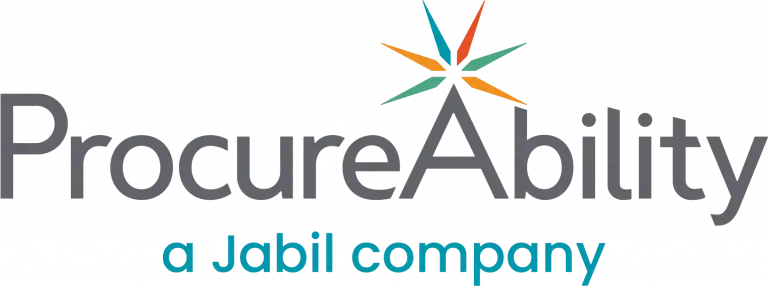From Cost Center to Profit Engine: 3 Strategies to Transform Procurement
With Fall upon on us, procurement leaders use this time as a planning-oriented, strategic window to build the resilience needed for a strong Q4 finish. In today’s landscape, procurement is no longer just about cost savings—it’s about driving profitability, enabling innovation, and creating a lasting competitive advantage. The decisions made now—whether it’s rethinking supplier partnerships, piloting sustainability initiatives, or enhancing risk visibility—will shape year-end outcomes. This is the moment to position procurement as a critical driver of enterprise value.
In ProcureAbility’s recent LinkedIn LIVE, Chris Sawchuk, Principal at The Hackett Group Inc. , and I discussed how top organizations are rewriting procurement’s role – and the results are game-changing. It’s a shift from operational support to strategic leadership, and it’s happening now.
1. Turn supplier relationships into innovation engines
We’ve all seen the limitations of transactional supplier management—it’s outdated, reactive, and leaves significant value on the table. Today’s forward-thinking procurement leaders are redefining the role of the RFP. It’s no longer just a Request for Proposal—it’s a Request for Partnership. This shift means engaging suppliers earlier, aligning on shared objectives, and designing contracts that reward collaboration over mere compliance.
Whether the goal is cost efficiency, faster lead times, or greater supply chain resilience, partnerships built on mutual outcomes elevate procurement from a gatekeeping function to a true growth driver.
Consider a recent example: a manufacturing client was grappling with rising logistics costs and growing sustainability demands. Instead of negotiating around constraints, they co-designed a new packaging solution with their supplier—introducing modular, reusable containers. This wasn’t just a spec adjustment; it was a reimagination of the entire packaging flow. The result? A 30% reduction in shipping waste, 18% lower packaging costs (materials and labor), and faster delivery cycles through simplified handling. Both companies benefited—from margin gains to market differentiation—through aligned, strategic collaboration.
This is procurement at its best: bridging innovation and execution to deliver enterprise-wide impact.
Action for Q4:
Start by identifying your top three suppliers—not by spend, but by their strategic potential to fuel innovation, mitigate risk, or drive long-term growth. Once selected, bring them into a collaborative working session centered on shared objectives, not just contract terms. This is your opportunity to align on priorities, explore avenues for co-innovation, and establish the trust necessary for deeper integration. When suppliers are treated as strategic partners rather than transactional vendors, procurement shifts from operational oversight to enabling enterprise-wide value creation.
2. Make sustainability a revenue stream
Too often, sustainability is treated as a compliance checkbox or a reporting exercise to appease stakeholders. But when embedded into procurement strategy, it becomes a powerful lever for profitability. In industries like manufacturing and tech, the ability to turn waste into value is not just possible—it’s repeatable. Through material reuse, circular supply models, and energy efficiency, procurement can drive both environmental and financial performance.
Take one firm that built a circular model for retired electronics. By partnering with companies like Retronics to recover and resell components, they transformed e-waste into $2.3M in annual profit—while also improving their ESG score.
This is where procurement can lead: identifying inefficiencies, unlocking secondary market value, and translating sustainable practices into real commercial gains. The opportunity isn’t just to reduce impact—it’s to create value.
Action for Q4:
Start with a single high-waste category—packaging, electronics, or spare parts—and take a deep dive. Conduct a targeted audit to identify where materials are being lost, underutilized, or discarded. From there, launch a pilot resale or recycling initiative with clear metrics in place. By quantifying the potential for cost recovery, new revenue streams, or risk mitigation, procurement can show how sustainability efforts not only advance ESG goals but also deliver measurable bottom-line impact.
3. Use data to predict – not just report
Procurement has the potential to serve as the organization’s “crow’s nest”—scanning the horizon for risks and opportunities before they reach the deck. But realizing that role requires more than retrospective spend analysis.
Leading teams are harnessing real-time data to track supplier health indicators—from invoice delays to delivery patterns—and using those insights to anticipate raw material shortages, geopolitical disruptions, and capacity constraints. Some are going even further, analyzing supplier innovation pipelines to inform R&D priorities or identify potential acquisition targets.
This marks a fundamental shift: from reporting on the past to predicting what’s ahead—and using that foresight to actively shape enterprise strategy.
Action for Q4:
Challenge your team to retire one backward-looking report—something that simply confirms what you already know—and replace it with a dashboard built to surface forward-looking risks or innovation opportunities. The goal isn’t perfect data; it’s actionable insight.
Whether it’s internally focused metrics, e.g. tying business demand forecasts to category management plans, or external metrics, e.g. monitoring early signals of supplier performance issues, shifts in commodity prices, or emerging technologies within your supply base, even imperfect indicators can fuel faster, smarter decisions. This is how procurement shifts from reporting the past to actively shaping what comes next.
The path forward
Procurement transformation isn’t a single leap—it’s the outcome of consistent, strategic action. The most successful teams focus on a few high-impact moves that build momentum over time:
- Partner with suppliers
- Profit from sustainability
- Predict with data
Waiting for perfect conditions only delays progress—and potential. Leading teams start small, iterate quickly, and scale what works. So, what’s standing in your way of turning procurement into a profit engine?
Author:




